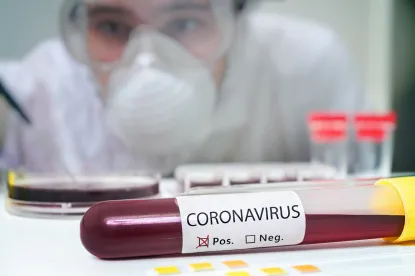On April 30, 2020, the Board of Governors of the Federal Reserve (Federal Reserve) announced revised terms for its $600 billion Main Street Lending Program. These include a third financing facility titled the Main Street Priority Loan Facility (MSPLF) and significant modifications to its previously announced Main Street New Loan Facility (MSNLF) and Main Street Expanded Loan Facility (MSELF). In addition, the Federal Reserve released a number of Frequently Asked Questions (FAQs) for these facilities.
The Main Street Lending Program was originally included as part of the Coronavirus Aid, Relief, and Economic Security Act (CARES Act) and first drafts of the term sheets were provided by the Federal Reserve on April 9. The most recent announcement follows a public comment period during which over 2,000 comment letters were provided to the Federal Reserve.
The new terms are primarily intended to increase access to the Main Street Lending Program by reducing borrowing restrictions for all borrowers, expanding the eligibility criteria for borrowers and lenders, and allowing certain borrowers to further leverage their balance sheets and income statements. Somewhat unexpectedly, the announcement also included a requirement that lenders keep 15% of their originated loans to more highly leveraged borrowers on their books, and affiliation tests for borrowers, which may now exclude a number of larger companies from the program. Further, private lenders remain excluded from the program and no details were provided on how to address many of the practical constraints contained in existing debt structures.
You can access the Federal Reserve’s announcement here and PDFs of term sheets and FAQs can be found at the following links:
-
Main Street New Loan Facility Term Sheet (Federal Reserve, April 30, 2020)
-
Main Street Priority Loan Facility Term Sheet (Federal Reserve, April 30, 2020)
-
Main Street Expanded Loan Facility Term Sheet (Federal Reserve, April 30, 2020)
-
Frequently Asked Questions (Federal Reserve, April 30, 2020)
This Client Alert summarizes the revised terms of the Main Street Lending Program and highlights some of our remaining concerns with it.
Eligible Borrowers
To participate in the Main Street Lending Program, a borrower must meet the following criteria:
-
be a for-profit entity created or organized in the U.S. or under the laws of the U.S. with significant operations in and a majority of its employees based in the U.S. (it appears U.S. subsidiaries of foreign entities or non-U.S. persons are permitted to participate if otherwise eligible);
-
be a partnership, limited liability company, corporation, association, trust, cooperative, joint venture (with no more than 49 percent participation by foreign entities); or a tribal business concern;
-
have been formed prior to March 13, 2020;
-
not be an “Ineligible Business” under the Small Business Administration (SBA) definition, as applied to the Paycheck Protection Program (PPP);
-
have (including its affiliates) fewer than 15,000 employees (increased from 10,000) or less than $5 billion in 2019 annual revenues (increased from $2.5 billion); and
-
not participate in the Primary Market Corporate Credit Facility or receive specific support provided by the CARES Act made available to air carriers and businesses critical to national security.
While non-profits are currently ineligible for the Main Street Lending Program, the Federal Reserve acknowledged the need to address the issues that non-profits are facing and additional information may follow.
The Federal Reserve also made clear that receipt of PPP funds does not make a business ineligible for a Main Street loan.
Eligible Lenders
A lender is eligible to participate in the Main Street Lending Program if it is one of the following:
-
a U.S. federally insured depository institution (including a bank, savings association, or credit union);
-
a U.S. branch or agency of a foreign bank, a U.S. intermediate holding company of a foreign banking organization, or a U.S. subsidiary of any of the foregoing (these lenders were previously not eligible); or
-
a U.S. bank holding company or U.S. savings or loan holding company.
In addition, under the MSELF, an existing syndicate of lenders may include eligible and non-eligible lenders, as long as the lender providing the new loan is an eligible lender.
As mentioned above, private non-bank lenders are still excluded from the program. However, the Federal Reserve has indicated that it is considering options to expand the list of eligible lenders in the future, so there may be a further expansion to this definition.
Lender’s Underwriting Requirements
The revised terms also include new obligations on the lender to assess the eligibility of a borrower and the borrower’s financial condition. These include:
-
if the borrower had a loan outstanding with the lender as of December 31, 2019, the lender must confirm such loans (or, under the MSELF, the original loan) had an internal risk rating equivalent to a “pass” in the Federal Financial Institutions Examination Council’s supervisory rating system on that date;
-
the lender must conduct an assessment of each potential borrower’s financial condition at the time of the borrower’s application; and
-
the lender must apply its own underwriting standards in evaluating the financial condition and creditworthiness of a potential borrower.
The term sheets note that the eligibility criteria provided by the Federal Reserve should be viewed by participating lenders as the minimum requirements for the program – meaning lenders may apply any additional requirements or underwriting standards.
Loan Amounts & Basic Terms
The MSNLF and MSPLF are new credit facilities meant to stand separately from any existing indebtedness. The MSELF allows lenders to add an upsized tranche to existing loans to eligible borrowers. Borrowers may participate in the MSNLF, the MSPLF, or the MSELF, but not in more than one of the facilities. Borrowers may receive more than one loan in a facility, but the maximum loan amounts described below will apply under each facility.
The basic terms of each facility are set forth in the table below:
|
|
Main Street
|
Main Street
|
Main Street
|
|
Loan Amount |
Loans are for a minimum of $500,000 (decreased from $1 million) and a maximum of the lesser of (1) $25 million, and (2) an amount that, when combined with borrower’s existing outstanding and undrawn available debt, does not exceed 4x the borrower’s adjusted 2019 EBITDA |
Loans are for a minimum of $500,000 and a maximum of the lesser of (1) $25 million, and (2) an amount that, when combined with borrower’s existing outstanding and undrawn available debt, does not exceed 6x the borrower’s adjusted 2019 EBITDA |
Loans are for a minimum of $10 million (increased from $1 million) and a maximum of the lesser of (1) $200 million (increased from $150 million); (2) 35% (increased from 30%) of the borrower’s existing outstanding and undrawn available debt that is pari passu in priority with the eligible loan and equivalent in secured status; and (3) an amount that, when combined with borrower’s existing outstanding and undrawn available debt, does not exceed 6x the borrower’s adjusted 2019 EBITDA |
|
Origination Dates |
Must be originated after April 24, 2020 |
Must be originated on or before April 24, 2020 (even if upsized after that date) |
|
|
Maturity Date |
4 years after origination |
||
|
Interest Rate |
Adjustable rate of LIBOR (1- or 3-month) plus 3.00% (no longer SOFR) |
||
|
Deferred Payments |
Principal and interest deferred for one year |
||
|
Amortization |
Equal one-third principal payments due at the end of years two, three and four |
15% of principal is due at end of years two and three; balloon payment due at the end of year four |
|
|
Security Interest |
The loan may be unsecured or secured |
The loan may be unsecured or secured. If the original loan is secured, the upsized tranche must also be secured on a pro rata basis with the original loan (however, the lender may require additional collateral to secure an upsized tranche as a condition of approval) |
|
|
Subordination |
The loan must not be contractually subordinated in terms of priority to any of the borrower’s other loans or debt instruments |
The loan must be senior to or pari passu with, in terms of priority and security, the borrower’s other loans or debt instruments, other than mortgage debt |
|
|
Prepayment |
Prepayment is permitted without penalty |
||
|
Additional Features |
TBD |
TBD |
The original loan may be a term loan or a revolving credit facility, but the upsized tranche must be a term loan The original loan must have a remaining maturity of at least 18 months (taking into account any adjustments made after April 24, 2020, including at the time of upsizing) |
|
Loan Participations |
The lender retains 5% of the loan, and the Special Purchase Vehicle (SPV) formed by the Federal Reserve purchases a 95% participation in the loan |
The Lender retains 15% and the SPV purchases an 85% participation |
The lender retains 5% and the SPV purchases a 95% participation In addition, the lender must retain its interest in the underlying loan until the underlying or upsized loan matures or the SPV sells all of its participation. |
|
Fees |
(1) Borrower pays an origination fee equal to 1% of the principal amount, (2) lender pays to the SPV a transaction fee for any new loans made equal to 1% of the principal amount of the loan at the time of origination, which transaction fee may be passed through to the borrower, and (3) the Federal Reserve shall pay to a participating lender a loan servicing fee equal to 0.25% of the principal amount of the loan or upsized tranche purchased as consideration for the lender servicing the loan |
(1) Borrower pays an origination fee equal to 0.75% of the principal amount of the upsized tranche, (2) lender pays to the SPV a transaction fee equal to 0.75% of the principal amount of the upsized tranche at the time of upsizing, which transaction fee may be passed through to the borrower, and (3) the Federal Reserve shall pay to a participating lender a loan servicing fee equal to 0.25% of the principal amount of the loan or upsized tranche purchased as consideration for the lender servicing the loan |
|
Key Defined Terms
Adjusted EBITDA
The new term sheets include a significant change to the definition of EBITDA. The facilities will now allow for adjusted EBITDA to be used in determining maximum loan size, and each lender is required, as discussed below, to use the same methodology to calculate adjusted 2019 EBITDA as it has previously used when extending credit to the borrower or similarly situated borrowers (or, in the case of the MSELF, when originating or amending the existing loan) on or before April 24, 2020.
The FAQs included a note that the Federal Reserve may adjust the eligibility metrics for asset-based borrowers, where EBITDA may not be as reliable of an indicator of creditworthiness.
Affiliation
The affiliation test set forth in 13 CFR 121.301(f) (1/1/2019 ed.) should be used to determine whether a business has affiliates whose employees and revenues must be added to the business’s employees and revenues for purposes of determining eligibility for the Main Street Lending Program. This is the same test used for analyzing eligibility for the PPP.
Annual Revenue
For the revenue test, borrowers must aggregate their revenues with those of their affiliates, when determining eligibility under the Main Street Lending Program. Businesses may determine their 2019 annual revenues based on either: (1) revenue per GAAP-audited financial statements; or (2) receipts as reported to the Internal Revenue Service. If a potential borrower (or its affiliate(s)) does not yet have audited financial statements or annual receipts for 2019, the borrower (or its affiliate(s)) should use its most recent audited financial statements or annual receipts.
Employees
As with the PPP, businesses should count their own full-time, part-time, seasonal or otherwise employed persons and those employed by their affiliates for purposes of determining eligibility. To determine the applicable number of employees, businesses should use the average of the total number of persons employed for each pay period over the 12 months prior to the origination or upsizing of the facility. While the CARES Act included a requirement that borrowers under the Main Street Lending Program have at least 500 employees, the Federal Reserve’s guidelines do not.
Existing Debt
Further, the Federal Reserve clarified in its FAQs that the phrase “existing outstanding and undrawn available debt” includes all amounts borrowed under any loan facility, including unsecured or secured loans from any bank, non-bank financial institution, or private lender, as well as any publicly issued bonds or private placement facilities. It also includes all unused commitments under any loan facility, excluding (1) any undrawn commitment that serves as a backup line for commercial paper issuance, (2) any undrawn commitment that is used to finance receivables (including seasonal financing of inventory), (3) any undrawn commitment that cannot be drawn without additional collateral, (4) any undrawn commitment that is no longer available due to change in circumstance. Existing outstanding and undrawn available debt should be calculated as of the date of the loan application.
Ineligible Business
As per the FAQs, applicants should reference 13 CFR 120.110(b)-(j) and (m)-(s), as modified by the SBA and Treasury when implementing the PPP, to determine if their business is ineligible. Ineligible businesses under PPP include, among others, financial businesses primarily engaged in the business of lending, passive businesses, life insurance companies, businesses engaged in any illegal activity, and businesses primarily engaged in political or lobbying activities.
Certifications and Covenants
The revised terms include changing the requirement that borrowers and lenders make “attestations” to making “certifications and covenants.” This goes to the heart of one of the main themes of the revised program – the lenders are now wearing their traditional hats as underwriters and are responsible for determining the eligibility and financial condition of the borrowers.
Another material change is the borrower is no longer obligated to provide an attestation that it requires financing due to the exigent circumstances presented by COVID-19.
Borrower Certifications and Covenants
Each borrower must make a good faith certification and covenant that, among other things, it:
-
shall not use funds to repay or refinance, or pay any interest on, pre-existing loans or lines of credit, or to repay or reduce other loan balances or junior debt obligations, unless such payment is mandatory and due;
-
However, under the MSPLF, the borrower may, at the time of origination of the loan, refinance existing debt owed by the borrower to a lender that is not the lender making the MSPLF loan; and
-
In addition, the FAQs confirm borrowers are permitted to (i) repay lines of credit and credit cards in the ordinary course, (ii) incur additional debt obligations required in the ordinary course, including inventory and equipment financing (subject to certain conditions), and (iii) refinance maturing indebtedness;
-
-
has a reasonable basis to believe that, as of the date of origination of the loan or upsized tranche and after giving effect to such loan or upsized tranche, it has the ability to meet its financial obligations for at least 90 days and does not expect to file for bankruptcy during that period;
-
shall not seek to cancel or reduce any existing outstanding lines of credit with lenders;
-
shall not during the life of the loan, plus one year, pay dividends or other distributions to its equity holders or repurchase equity securities listed on a national stock exchange of the borrower or its parent company (except a borrower that is an S corporation or tax pass-through entity may make distributions to the extent reasonably required to cover its owners’ tax obligations in respect of the borrower’s earnings); and
-
shall not during the life of the loan, plus one year, pay any officer or employee whose total compensation in 2019 exceeded $425,000 (1) compensation for a consecutive 12-month period that exceeds 2019 total compensation paid to that person; or (2) severance pay or other benefits on termination of employment that exceed 2x the 2019 total compensation paid to that person; shall not pay any officer or employee whose total compensation in 2019 exceeded $3 million more than $3 million plus 50% of the amount by which such person’s total compensation exceeded $3 million in 2019.
In addition, the revised term sheets state a borrower should make commercially reasonable efforts to maintain its payroll and retain its employees during the time the loan is outstanding (this is no longer a certification requirement under the new terms). The Federal Reserve provided some additional guidance in the FAQs, stating: “Specifically, an Eligible Borrower should undertake good-faith efforts to maintain payroll and retain employees, in light of its capacities, the economic environment, its available resources, and the business need for labor. Borrowers that have already laid-off or furloughed workers as a result of the disruptions from COVID-19 are eligible to apply for Main Street loans.”
Lender Certifications and Covenants
Lender must now also make certain good faith certifications and covenants, which include it:
-
will not request that the borrower repay other debt extended by the lender, or pay interest on such debt, until the loan is repaid in full, unless such payment is mandatory and due, or in the case of default and acceleration;
-
will not cancel or reduce any existing committed lines of credit to the borrower, except in an event of default; and
-
will use the same methodology in calculating the borrower’s adjusted 2019 EBITDA for eligibility purposes (as described above) as it has previously used for adjusting EBITDA when extending credit to the borrower or similarly situated borrowers (or, in the case of the MSELF, when originating or amending the existing loan) on or before April 24, 2020.
Next Steps
The Federal Reserve did not set a target start date for the Main Street Lending Program, but interested parties should continue to monitor the Federal Reserve’s Main Street Lending Program website for updates.
Until then, we recommend each interested borrower do the following:
-
Confirm the borrower is eligible to participate in the program (see above criteria);
-
Conduct an analysis of the three facilities and confirm it meets the debt and EBITDA requirements and which facility is likely the best “fit” for the borrower;
-
Confirm with its lender (assuming the lender is eligible) that the borrower is interested in participating and request to be notified when further documentation or application materials are available;
-
Confirm with its existing lender that as of December 31, 2019, the borrower had internal risk rating equivalent to a “pass” in the Federal Financial Institutions Examination Council’s supervisory rating system;
-
Conduct an analysis of the borrower’s existing debt facilities and confirm if any amendments or waivers are necessary to permit the issuance of new debt under the program; and
-
Consider reaching out to any other senior or subordinated lenders to confirm they would agree to the required subordination provisions of the facilities (given the sensitivity of these conversations, the borrower may want to consider delaying these conversations until the borrower and Main Street Lending Program lender are further along in their discussions).
We continue to closely monitor the federal government’s response to the ongoing challenges that businesses face in response to the COVID-19 pandemic and will provide additional updates as warranted.






 />i
/>i
